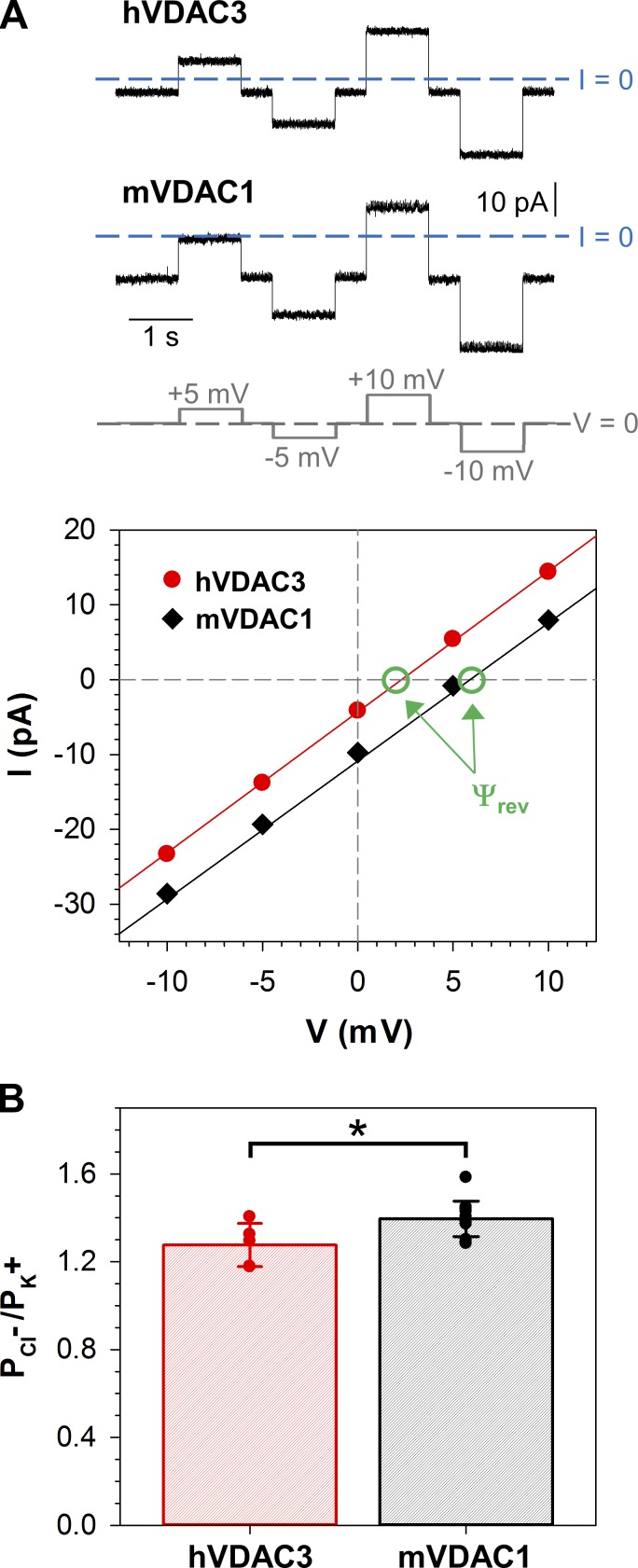Figure 2.
hVDAC3 forms anion selective channels. (A) Representative hVDAC3 and mVDAC1 single-channel current traces (upper panel) obtained in KCl gradient: 1 M KCl (cis) versus 0.2 M KCl (trans). The applied voltages are shown at the bottom. Corresponding I/V curves (lower panel) and linear regressions (solid lines) allow calculation of the reversal potentials (Ψrev, indicated by green circles and arrows). A positive Ѱrev corresponds to an anion selectivity. (B) Permeability ratios, , calculated from corresponding reversal potentials using Eq. 1 in Supplemental methods for hVDAC3 and mVDAC1. Solid circles correspond to the individual data points. Data are means of at least five independent experiments ± SD; t test with equal variance was used to check significance, *, P < 0.05. Planar membranes were made of DOPC/DOPE/2DOPG. KCl solutions were buffered with 5 mM HEPES at pH 7.4.

